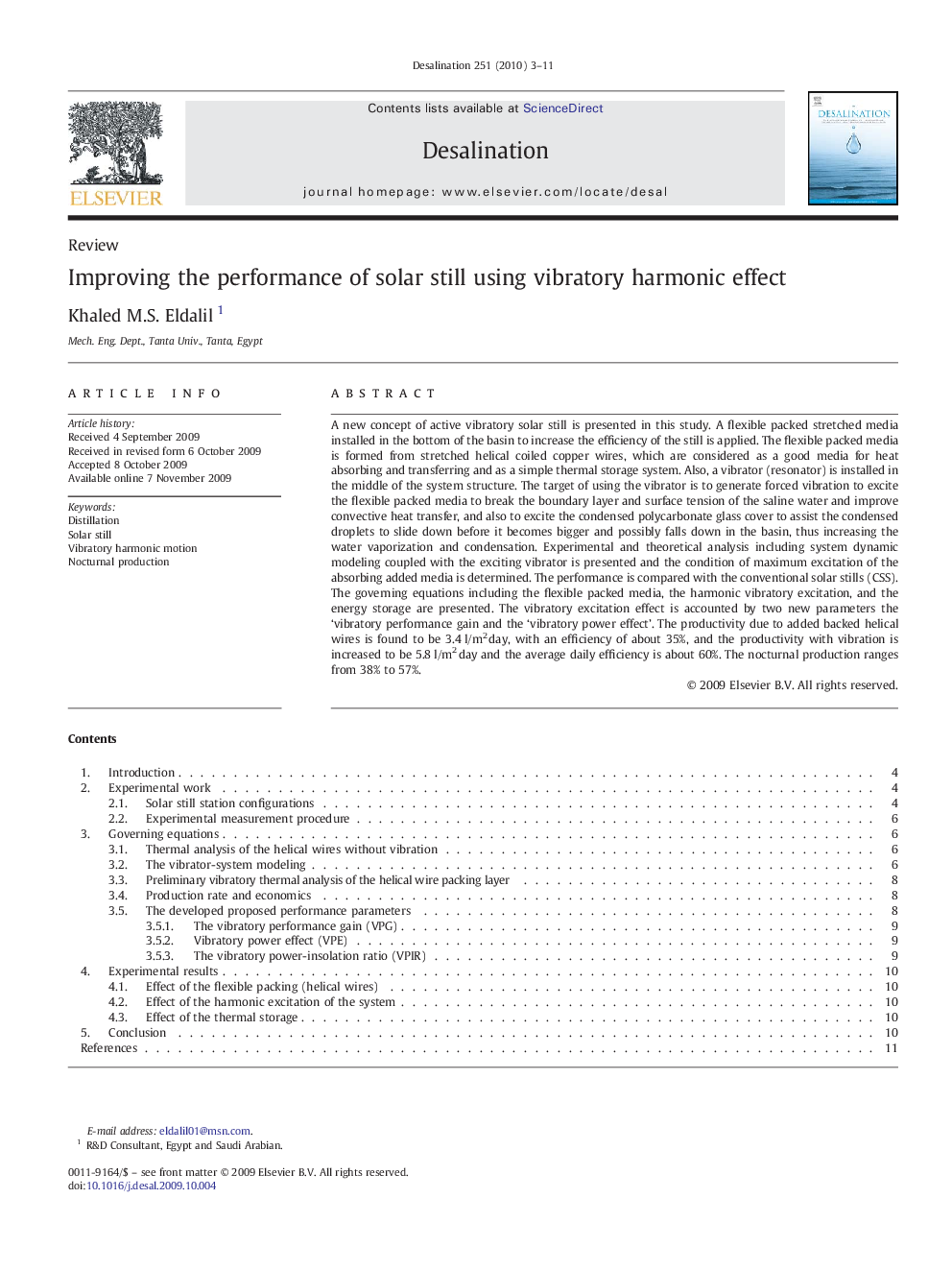| کد مقاله | کد نشریه | سال انتشار | مقاله انگلیسی | نسخه تمام متن |
|---|---|---|---|---|
| 625880 | 1455440 | 2010 | 9 صفحه PDF | دانلود رایگان |

A new concept of active vibratory solar still is presented in this study. A flexible packed stretched media installed in the bottom of the basin to increase the efficiency of the still is applied. The flexible packed media is formed from stretched helical coiled copper wires, which are considered as a good media for heat absorbing and transferring and as a simple thermal storage system. Also, a vibrator (resonator) is installed in the middle of the system structure. The target of using the vibrator is to generate forced vibration to excite the flexible packed media to break the boundary layer and surface tension of the saline water and improve convective heat transfer, and also to excite the condensed polycarbonate glass cover to assist the condensed droplets to slide down before it becomes bigger and possibly falls down in the basin, thus increasing the water vaporization and condensation. Experimental and theoretical analysis including system dynamic modeling coupled with the exciting vibrator is presented and the condition of maximum excitation of the absorbing added media is determined. The performance is compared with the conventional solar stills (CSS). The governing equations including the flexible packed media, the harmonic vibratory excitation, and the energy storage are presented. The vibratory excitation effect is accounted by two new parameters the ‘vibratory performance gain and the ‘vibratory power effect’. The productivity due to added backed helical wires is found to be 3.4 l/m2 day, with an efficiency of about 35%, and the productivity with vibration is increased to be 5.8 l/m2 day and the average daily efficiency is about 60%. The nocturnal production ranges from 38% to 57%.
Journal: Desalination - Volume 251, Issues 1–3, February 2010, Pages 3–11